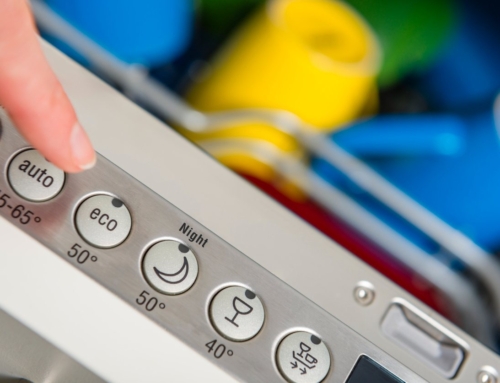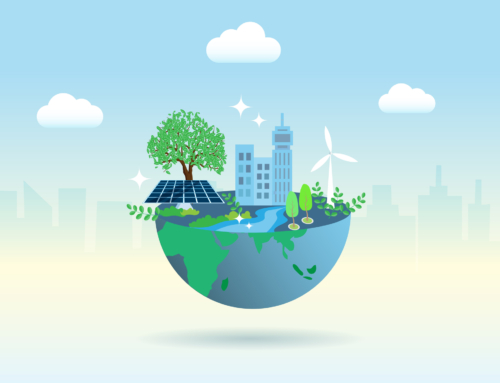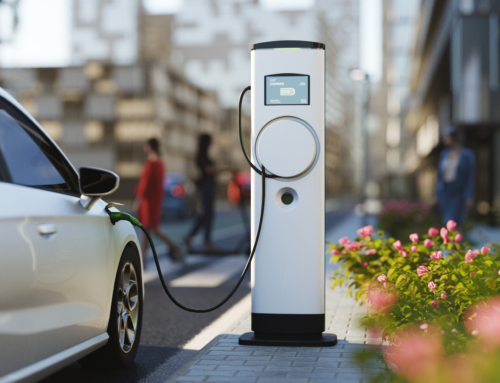When you hear the words “nuclear energy,” what do you think of? Perhaps an image comes to mind of a nuclear bomb, or a nuclear energy crisis like Chernobyl or Fukushima. If this is your image of nuclear power, you might be surprised to learn that nuclear energy is actually considered one of the most environmentally friendly forms of energy production in the world. With fewer emissions and greater efficiency, there are many pros and cons of nuclear energy to consider.
There are also challenges when producing nuclear energy, including expense, safety, waste, security, and more. Learn more about the pros and cons of nuclear energy to better understand this energy source and how it might benefit our world in the future.
What Is Nuclear Energy?
Nuclear energy is created through the process of splitting atoms—specifically, uranium atoms. When the atom is split it becomes two smaller, lighter atoms. Because energy doesn’t just disappear, the “lost” mass is converted into heat, which is used to produce electricity. Nuclear power plants simply provide a controlled environment for these reactions to occur.
Nuclear Energy Pros
There are many pros and cons of nuclear energy, and it’s important to understand both sides to get an idea of what this energy resource is capable of. Knowing the pros and cons of nuclear energy will help you decide for yourself whether this energy resource is a good decision for our future energy needs and for the planet.
1. Cost-Effective Operation
After the initial cost of construction, nuclear energy has the advantage of being one of the most cost-effective energy solutions available. The cost to produce electricity from nuclear energy is much lower than the cost to produce energy from gas, coal, or oil unless those resources are located near the power plant they supply. Nuclear energy also has the added benefit of facing comparatively low risks for cost inflation—unlike traditional fossil fuels that regularly fluctuate in price.
2. Reliable Source of Energy
While some energy sources are dependent upon weather conditions, like solar and wind power, nuclear energy has no such constraints. It doesn’t matter if the wind isn’t blowing or if the day is cloudy. Nuclear power plants are essentially unaffected by external climatic factors and create predictable and steady energy output. A nuclear power plant in full-swing operation can produce energy non-stop for an entire year, which allows for a good return on investment because there is no delay in energy production.
Nuclear power plants are also reliable because we have enough uranium on the planet to generate energy for the next 70-80 years. While that may not sound like a long time, it is longer than many fossil fuels are estimated to last, and there are other nuclear energy sources being explored to power nuclear power plants.
3. Stable Base Load Energy
You may not realize it, but nuclear energy is widely used in America. In fact, it makes up around 20% of all electricity generated in the United States. This efficient energy source comes from the 98 nuclear power reactors dotted around 30 different states in the U.S. The stable production of power created by nuclear power plants means that it can ideally be used in conjunction with other forms of renewable energy.
For example, wind turbines generate significant amounts of power—when the wind blows. When the wind is blowing, nuclear plants can adjust energy output to be lower. Conversely, when the wind is not blowing and greater energy is needed, nuclear energy can be adjusted to compensate for the lack of wind (or solar) generated power.
4. Low Pollution Output
When it comes to pollution, it’s clear that there are pros and cons of nuclear energy, and don’t worry, we’ll touch on the issue of nuclear waste in a moment. However, the overall output of pollution from a nuclear power plant is quite low compared with energy production from fossil fuels. The current consumption of nuclear energy already reduces over 555 million metric tons of emissions every year. This reduction in greenhouse gases is a great indicator of how switching to nuclear energy can help reduce our effect on global climate change in the long run.
5. Over 80 Years of Fuel Availability
Like fossil fuels, the uranium used to supply nuclear power plants is in limited supply. However, our uranium reserves are estimated to last another 80 years, whereas fossil fuels have a much more limited lifespan. Since the Industrial Revolution, we have been consistently and constantly depleting our fossil fuel reserves. If we continue consuming fossil fuels and keep increasing our consumption as the world population grows, we are estimated to run out of oil by 2052, gas in 2060, and coal by 2088.
Of course, there are more fossil fuel discoveries we have yet to make, but they are fewer and farther between than ever and will eventually run out. Switching to uranium might give us the extra time we need to find better and cleaner renewable energy resources. Plus, some countries like India, China, and Russia are already working towards using greener and more abundant thorium to power nuclear reactors. If we switch to thorium we will have even longer than 80 years of fuel available. However, if scientists can turn nuclear fusion into a reality, we would theoretically never run out of electricity ever again. Turning nuclear energy into sustainable energy requires breeder reactors and nuclear fusion to sustain us for the foreseeable future.
6. High Energy Density From Nuclear Fission
On our list of the pros and cons of nuclear energy, this pro is quite astounding. Nuclear fission (the process used to generate nuclear energy) releases much greater amounts of energy than simply burning fossil fuels like gas, oil, or coal. How much more efficient? Nuclear fission is nearly 8,000 times more efficient at producing energy than traditional fossil fuels. That’s a considerable amount of energy density. Because nuclear energy is more efficient, it requires less fuel to power the plant and therefore creates less waste as well.
Nuclear Energy Cons
On our list of pros and cons of nuclear energy, we’ve covered what makes nuclear power a great option for the future of our electricity needs. However, there are disadvantages of nuclear energy to keep in mind when considering if this power source is the best form of environmentally friendly energy for our future. Here are some of the main cons of nuclear energy.
1. Cost to Build is Rising
Despite being relatively inexpensive to operate, nuclear power plants are incredibly expensive to build—and the cost keeps rising. From 2002 to 2008 the estimated cost to build a nuclear plant grew from $2-$4 billion to $9 billion, and power plants often surpass their cost estimates during construction. In addition to the expense of building a power plant, nuclear plants must also allocate funds to protect the waste they produce and keep it in cooled structures with security procedures in place. All of these costs make nuclear power quite expensive.
2. Risk of Catastrophe
One of the first things most people think of when they hear nuclear power plant is the disaster at Chernobyl. Although we don’t know exactly how many people died as a result of the Chernobyl incident, it’s estimated that there have been as many as 10,000 deaths from the long-term effects of radiation in the region. The Fukushima power plant crisis in 2011 showed that no matter how safe nuclear power plants are designed to be, accidents can and do happen.
3. Difficulty Storing Radioactive Waste
Although nuclear energy production does not create any emissions, it does produce radioactive waste that must be securely stored so it doesn’t pollute the environment. While radiation might sound scary, we are constantly exposed to small amounts of radioactivity from cosmic rays or radon in the air we breathe. In small quantities, radiation isn’t harmful—but the radioactive waste from nuclear energy production is incredibly dangerous.
Storage of radioactive waste is a major challenge facing nuclear power plants. Because there’s no way to destroy nuclear waste, the current solution is to seal it securely in containers and store it deep underground where it can’t contaminate the environment. As technology improves, we will hopefully find better ways of storing radioactive waste in the future.
4. An Environmentally Damaging Process
Nuclear power plants have a greater impact on the environment than just the waste they produce. The mining and enrichment of uranium are not environmentally friendly processes. Open-pit mining for uranium is safe for miners but leaves behind radioactive particles, causes erosion, and even pollutes nearby sources of water. Underground mining isn’t much better and exposes miners to high amounts of radiation while producing radioactive waste rock during extraction and processing.
5. Security Threat
Nuclear power presents a unique threat to our national security because it is powered by nuclear energy. Terrorists might target nuclear power plants with the intention of creating a disaster, and the uranium used to produce the power can be turned into nuclear weapons if they end up in the wrong hands. For these reasons, security surrounding nuclear materials and nuclear power plants is extremely important.
6. Temporary Fuel Supply
There might be some important pros and cons of nuclear energy, but one of the most important considerations to keep in mind is that nuclear energy is dependent on uranium and thorium to produce energy. Unless we can find a way to create nuclear fusion or build breeder reactors before our supply dries up, we will be unable to create energy with the nuclear power plants we’ve built for the future. Ultimately, nuclear power is only a temporary solution with a very high price tag.
A Sustainable Future
Learning about the pros and cons of nuclear energy will help you make your own decision about whether it’s a good choice for our future energy needs or whether it’s not a long-term strategy worth pursuing. If you’re interested in doing your part for the environment and finding ways to reduce your energy consumption, visit Spring Power & Gas to learn more about our environmentally conscious products today. We offer services in Maryland, New Jersey, and Pennsylvania





![Top 11 Sustainable Building Practices for Eco-Homes [Plus 5 Sustainable Materials]](https://springpowerandgas.us/wp-content/uploads/2023/02/iStock-181062267-500x383.jpg)

